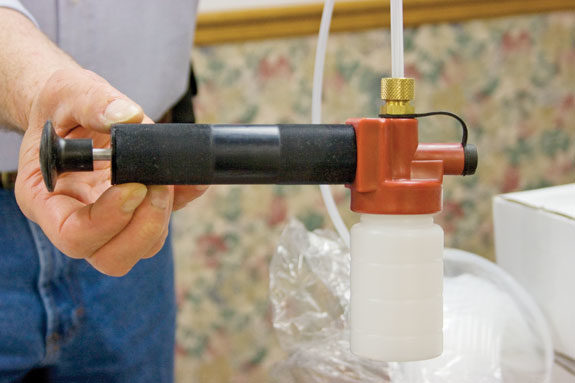To help make sense of the results, I talked to Gary Cavender, Lubricants Division Manager for United Oil in Twin Falls, Idaho. He has been working on/with machinery for 47 years.
Twenty-seven of those years were spent in the Army where he moved up the ranks and eventually established a program of preventative maintenance that kept 94 percent of the 850 vehicles (running 6 million miles a year) in action all year long for four years.
He says that oils are all basically the same, except for the additives they put in it. There are four big oil companies and they have a set of additives unique to their oil.
This is important because you need to specify the oil brand and type on the sample kit, even if it’s not that company’s brand, because the analysis will be off if the sample is analyzed against the wrong oil. Every testing facility has a formula for all the oils on the market.
Reading results
When you pull your sample, you need to take the oil out at operating temperature as prescribed in your owner’s manual. Some people will drive the machine over the pit and drain the oil and when it slows down they stick the bottle underneath it and send that in. Don’t do that.
“When you do that you get the sludge off the bottom of the oil pan and your analysis is bogus,” Cavender says.
Instead you need to get the machine ready and then use a tube and a pump to pull the oil out of the reservoir through the dipstick pipe, which can be done with the pump shown above or there are other methods that your dealer can explain to you.
When you get the analysis back, the report will show you what chemical properties are too high or low and possible reasons for it (each company has a different way of showing this so follow the legend or ask your dealer to help you read it the first time).
For example, the report may say that you have too much potassium in your oil. This could mean your coolant is leaking into your engine – which is very bad – or it could mean there is an airborne contamination taking place. This will give you a starting point for heading off problems that could be costly in the future.
Sample data can now be seen on the web. When submitting a sample you should get a user name and password from the labs and this will allow you to look at the analysis very quickly. If you have multiple machines that you are sending samples in for, the web system is more beneficial because you can see them all in the same place.
If the readout is good, and you didn’t dump all the oil, you can postpone the oil change until later, saving yourself money.
One trucking outfit in the Magic Valley has lengthened their oil change interval from 10,000 miles to 40,000 miles because they are using oil sampling and high-quality oil. With regular oil samples, your machines will develop a history and your mechanics can notice trends that will also help head off problems before they become serious.
Change filters more often
One other thought from Cavender on oil changes. You can change your filters a little more often to keep your oil good longer.
“A lot of people will just put a new filter on instead of changing the oil. If it saves you time and money, that’s the name of the game – to be prudent and cost-effective. It was unheard of to go over 20,000 miles between oil changes on semi trucks. Can you imagine how much that guy is saving going 40,000 miles?”
Oil is cheaper than repairs, but if your oil will lubricate for 300 hours instead of 150 hours, then that’s money saved and earned. Pay close attention to your results, don’t just assume that you can double the time between oil change intervals. Oil samples help you manage risks and down time. FG
Remember to send any questions you have about your equipment to ryan@progressivedairy.com










